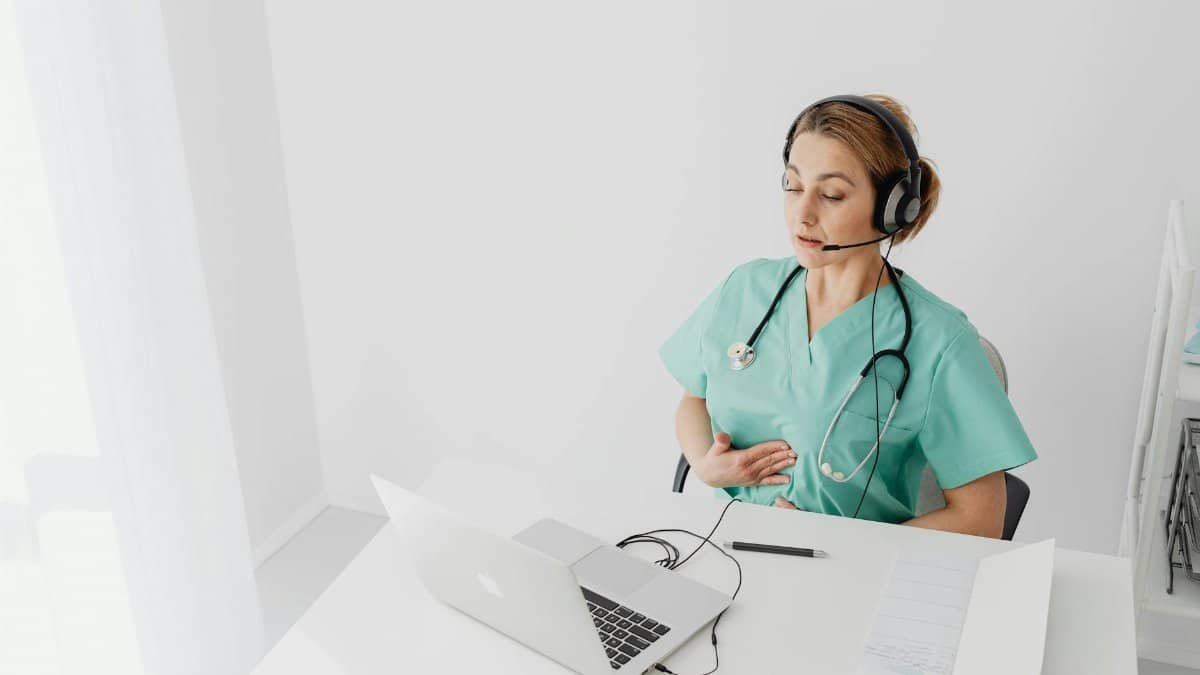New data shows 40% of nurses report improved focus after incorporating self-inquiry practices, according to a recent survey by the American Nurses Association. In the high-stakes world of healthcare, where distractions can lead to critical errors, techniques like meditation clarity breathwork are emerging as game-changers. These methods combine mindful breathing with introspective questioning to cut through mental fog. Nurses juggling long shifts and emotional demands are turning to them for quick resets. But does it really work? Experts say yes, offering a simple path to clarity amid chaos. This trend highlights a growing emphasis on mental wellness in nursing, potentially transforming patient care nationwide.
What Is Self-Inquiry and How It Ties to Meditation

Self-inquiry starts with asking pointed questions like “What am I feeling right now?” or “Why is this distracting me?” It’s a core part of many mindfulness traditions, rooted in ancient philosophies but adapted for modern life. When paired with meditation, it sharpens awareness. Nurses use it to pause during hectic shifts, regaining control over scattered thoughts. Studies from the National Institutes of Health show mindfulness reduces stress by 25% in healthcare workers. This practice isn’t fluffy; it’s practical, helping professionals stay grounded. By integrating breathwork, self-inquiry becomes a tool for immediate mental reset, fostering sustained focus in demanding environments.
The Role of Breathwork in Building Clarity

Breathwork involves controlled breathing patterns to regulate the nervous system. Techniques like 4-7-8 breathing calm the mind quickly. For nurses, this means countering distractions from beeping monitors or urgent calls. A study published in the Journal of Clinical Nursing found breathwork lowers anxiety levels in shift workers. Linking it to self-inquiry amplifies effects, as deep breaths create space for reflective questions. In 2025, wellness programs in hospitals are increasingly including these methods. Nurses report feeling more present, leading to fewer mistakes and better patient interactions. It’s straightforward: breathe, inquire, refocus.
Why Nurses Face Unique Distractions

Nurses deal with constant interruptions: patient needs, paperwork, and team coordination. A report from the Centers for Disease Control and Prevention highlights how these factors contribute to burnout, affecting 62% of the workforce. Distractions aren’t just annoying; they risk safety. Self-inquiry helps by encouraging nurses to identify distraction sources, like emotional fatigue from back-to-back emergencies. Combining it with meditation allows for micro-breaks that restore attention. Real-world applications show nurses using these tools during breaks, emerging more alert. This approach addresses the root causes, not just symptoms, in a field where focus saves lives.
Practical Steps for Nurses to Start Self-Inquiry

Begin with five minutes daily. Sit quietly, breathe deeply, and ask “What’s pulling my attention?” Note thoughts without judgment. Apps like Headspace offer guided sessions tailored for healthcare pros. Integrate into routines: before shifts or after tough cases. Breathwork adds power; try inhaling for four counts, holding, then exhaling slowly. Consistency matters. A survey by the American Nurses Association indicates regular practitioners see 30% less distraction. Nurses can track progress in journals, noting clearer decision-making. Start small, build up; results come fast in high-pressure jobs.
Real Stories from Nurses Using These Techniques

Take Maria Lopez, a New York ER nurse. Overwhelmed by 12-hour shifts, she started self-inquiry with breathwork. “It changed everything,” she says. “I handle chaos better now.” Her experience echoes many in the field. Another nurse from California reports fewer errors after adopting meditation practices. These anecdotes align with data showing reduced burnout. In group sessions, nurses share how questioning distractions leads to calmer responses. It’s not theory; it’s lived reality. As hospitals promote wellness, more stories emerge, proving self-inquiry’s value in beating daily distractions.
Scientific Backing for Meditation and Breathwork

Research supports these methods. A Harvard study links mindfulness to improved cognitive function, crucial for nurses. Breathwork activates the parasympathetic system, reducing stress hormones. Combined with self-inquiry, it enhances emotional regulation. Findings from the Journal of the American Medical Association note lower distraction rates in mindful practitioners. In 2025, expect more integration into nursing education. Experts emphasize evidence-based benefits, not hype. For nurses, this means tangible gains: sharper focus, less fatigue. Science confirms what users feel, solidifying these tools in healthcare protocols.
Challenges and How to Overcome Them

Skepticism is common; some nurses view self-inquiry as too “woo-woo.” Time constraints add barriers in busy schedules. Overcome by starting with one-minute sessions. Doubt fades with results. Another hurdle: inconsistency. Set reminders or pair with existing habits, like coffee breaks. Group accountability helps too; join hospital wellness groups. Data shows persistence pays off, with 50% improvement in focus after a month. Address resistance by focusing on outcomes: better patient care, personal well-being. These strategies make adoption feasible, turning challenges into stepping stones for lasting clarity.
Broader Impacts on Healthcare and Wellness

Beyond individual nurses, self-inquiry influences entire teams. Hospitals adopting these practices see improved morale and efficiency. Patient satisfaction rises with more attentive care. In the U.S., where nurse shortages persist, retaining focused staff is key. Wellness trends in 2025 prioritize mental tools like meditation clarity breathwork. This shift could reduce medical errors nationwide. Experts predict widespread adoption, backed by ongoing research. For the industry, it’s a proactive step toward sustainable healthcare. Nurses leading the charge show how personal practices ripple out, enhancing overall system resilience.
Getting Started Resources and Tips

New to this? Check online courses from platforms like Coursera, focusing on mindfulness for professionals. Books like “The Miracle of Mindfulness” provide foundations. Local workshops in cities offer hands-on breathwork. Tip: Practice in low-stakes moments first. Track benefits weekly to stay motivated. For nurses, hospital HR often has free resources. Remember, integration with self-inquiry maximizes clarity. With minimal investment, gains are significant. Start today; the path to beating distractions is accessible and effective.
